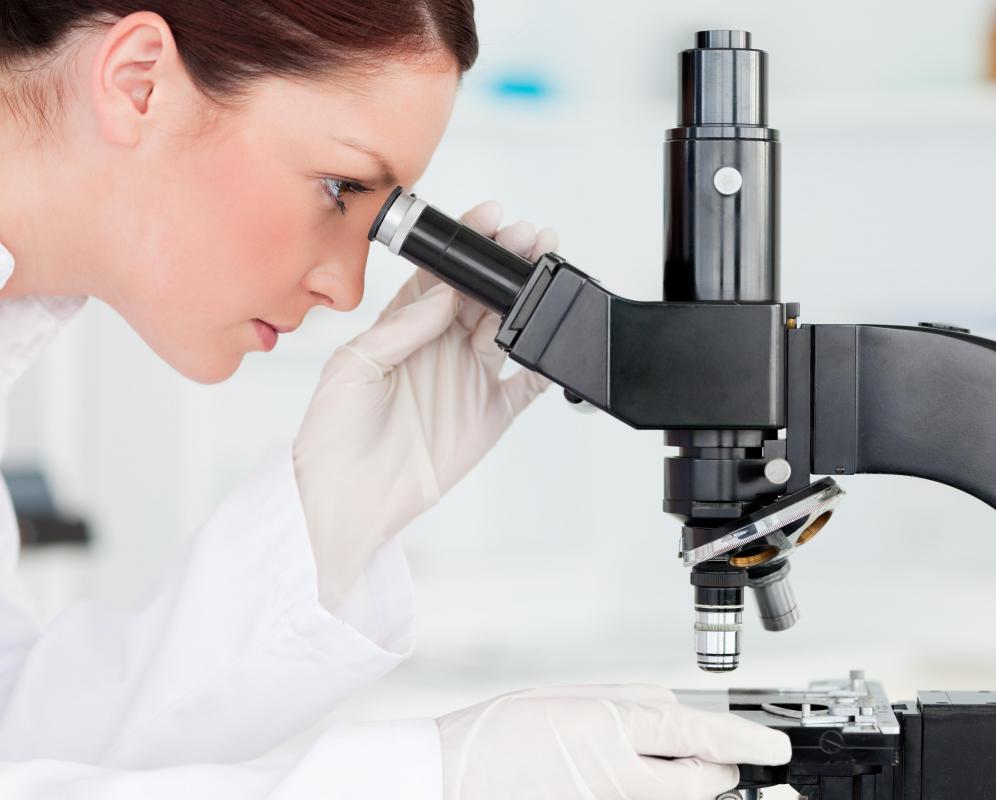At TheHealthBoard, we're committed to delivering accurate, trustworthy information. Our expert-authored content is rigorously fact-checked and sourced from credible authorities. Discover how we uphold the highest standards in providing you with reliable knowledge.
What is a Microbial Test?
A microbial test is a laboratory test that checks for the presence of microorganisms in a sample provided to the laboratory. Such testing is used for product safety, to look for signs of contamination in products that will be sold to the public, and for lab control, to confirm that the products and equipment being used in a lab are not contaminated with microorganisms. It is also possible to conduct some basic testing in the field without having to send samples to a lab.
Food products, pharmaceuticals, cosmetics, and water are common sources of samples for a microbial test. There are strict requirements about the facilities where such products are processed and handled that are designed to reduce the risk of contamination, but even with careful adherence to standards and procedures, contaminants can creep in. A microbial test confirms that the products are safe to distribute.

A lab can be directed to perform a battery of microbial tests looking for common sources of contamination. Field test kits rely on swabs that react to the presence of microbes. In either case, the test is designed with tolerances. Low levels of microbes that are not a cause for concern will not trigger a positive result, while any reading that exceeds standards set by regulators will register as positive. Based on the outcome of the microbial test, people can release a product for sale or hold a batch back to address contamination concerns.

In addition to testing product samples, labs can also test equipment. If contaminants do enter a facility, they often end up on processing equipment. The contaminants can be passed on each time materials move through the equipment, fouling multiple batches of products. Most facilities regularly swab and check their equipment throughout the day, so if contamination occurs, it is identified as soon as possible. This allows the company to stop production and deal with the contamination.

Labs use a microbial test to confirm that equipment and supplies are clean and free of contaminants. Such testing is also used to verify that growth mediums are clean and can be used to culture the desired microorganisms. In this case, the goal is to actively cultivate microorganisms while ensuring that organisms that might contaminate a petri dish cannot thrive in the growth medium. This testing is performed routinely to ensure that a lab is meeting its own standards and documentation of such testing is usually included in scientific research to show that the research was performed in a controlled environment.
AS FEATURED ON:
AS FEATURED ON:















Discussion Comments
Microbial testing of food is crucial to a food business. If they want to thrive, they have to be sure that they aren't selling contaminated goods to customers, because people have a hard time forgetting whose products made them sick.
@StarJo – I'm not sure what the reason for the test is either. The water pressure sometimes gets really low in my area, and this is usually followed by a microbial water test.
Some people say the pressure is low because the water company is working on the system. I don't know if they are working on it because they suspect it is contaminated or if working on it has caused possible contamination.
I am just glad that they test it when necessary. I would hate to think that I might be drinking microorganisms without knowing it.
I've heard about the microbial testing of water before. I believe that the water company in my area does this after every big storm that moves through.
I'm not sure if the rainwater runoff contaminates the water supply or not, but it does seem that most boil water notices come after big thunderstorms with lots of rain. I don't ask too many questions about it.
Oh, I thought a microbial test was what the doctor did to determine if you had a bacterial infection! It seems I was wrong.
Post your comments